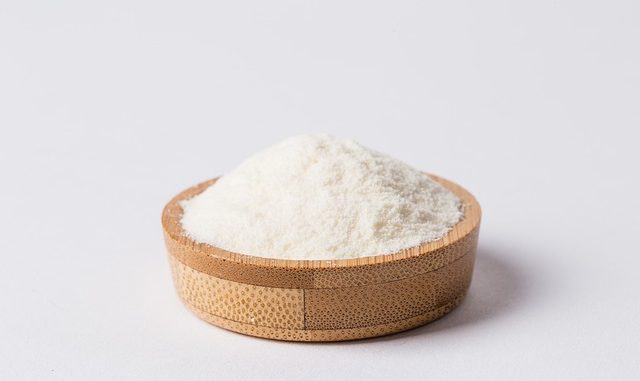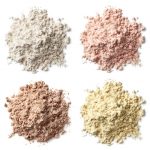
Powder clumping is a pain for anybody making food or pharmaceutical products! In fact it has other terms too including caking and agglomeration but whatever it’s called it is a major manufacturing and storage nuisance. The issues are common in both the food and pharmaceutical industries and often adds extra cost to processing as well as upsetting storage as well.
Ideally, we would like powders to be free-flowing. Unfortunately, all food powders in particular often contain lumps, clumps and granules.
One of the biggest issues is exposure of the powder to water. Most powders will absorb some water vapour. Initially, the water vapour remains on the surface of the powder particles but after awhile it begins to penetrate the particle. The result is a powder that loses its free flowing characteristic.
The 5 Stages Of Clumping And Caking
- The particles become wet.
- They stick.
- They agglomerate
- They start to compact.
- They finally start to liquify.
Food Powder Types
Most foods and ingredients are complicated because they can contain many different components, so predicting their behaviour is often difficult.
The typical foods prone to this phenomenon of powder clumping are sugar, cocoa powder, coconut milk powder, custard powder, dried milk, dried ready meals etc. The etc. is there because generally most food powders seem to be very prone to this.
The powders are usually classified as either amorphous or crystalline. When it comes to a discussion of physical deterioration, powder sticking and caking is often a reflection of these two physical properties.
Understanding The Physical Aspects Of Powder Clumping
One relatively definite study by Peleg and Mannheim (1969) looked at caking in powdered onion as a model. Onion powder is a good model for dried fruit and vegetable powders. Caking occurred when the initially dried particles became wet on the surface and started to clump because bridges were formed. The forces of attraction were sufficiently great enough to keep the particles together. In the process there was also seen what is called humidity shrinkage.
In this powder system, water absorption was the main factor causing caking. The researchers were very clear that the relative humidity for storage is highly important. Indeed most storage tests for powders now involve exposure of the powder to 75% relative humidity at 30 Centigrade. The level of water absorption and degree of clumping is monitored at various time points over 2 years or more. Understanding the physical changes that occur to the powder is critical to understanding how the powder will perform on storage and with handling. That study was also useful because they tried flow conditioners which were not suitable for preventing caking because moisture absorption was not being prevented. Whilst these conditioners offer a physical barrier that helps maintain some flow, there is never enough to prevent the powder from water absorption.
Amorphous Powders And Clumping
The glass transition temperature (Tg) is the temperature at which an amorphous material undergoes a change from a highly viscous “glassy” state to a “rubbery” state. When the rubbery state occurs, powders will undergo deformation and flow becomes possible.
Protein powders are usually in a glassy state at low moisture contents. When the moisture content increases with increasing relative humidity say, the water behaves as a plasticizer within the protein structure. The glass transition temperature (Tg) drops and the protein stops being a free flowing powder and becomes a sticky uncooperative but cohesive mass.
In 1993, Karel et al., established that the effects of moisture and temperature which were highly influential on the rate of change occurring to powdered foods on storage could be linked to temperatures of storage above the glass transition temperature (Tg).
Lloyd et al., (1996) examined caking in spray dried amorphous lactose as an example of what happens in these types of amorphous powders. In this study they employed some simple temperature testing to check the onset temperatures for viscous flow and caking. The caking was seen as an increase in hardness of the lactose powder as it formed plugs. The onset temperature for viscous flow decreased with increasing water activity, Aw and matched the onset temperature of glass transition Tg1
In this particular example, they found that the raising of the powder temperature above the glass transition temperature promoted viscous flow and increased the potential for caking. This has proved a useful model for the behaviour of clumping in amorphous food powders.
Mauer et al., (2000) explored the issues of stickiness and clumping in dried beta-casein on storage. Unlike lactose, dried casein powder is a good example of a protein powder prone to clumping.
Crystalline Powders
Hygroscopic crystalline powders are very prone to moisture absorption and if enough water is added will completely liquify. That process is called deliquescence (Salameh et al., 2006).
The process of deliquescence occurs as water adsorbs onto the surface of the crystals, usually in a high humidity environment. These surface molecules dissolve. A saturated solution then forms as a film around the solid mass. Vapour pressure differences mean water continues to condense into this saturated solution. The result is that more crystalline material dissolves. The eventual outcome is that all the crystalline material dissolves and forms a solution.
References
Karel, M., Roos, Y., and Buera, M. P. (1993). Effects of glass transition of processing and storage. In: Glassy State in Foods. Blanshard, J. M., and Lilliford, P. J. eds. Nottingham University Press, Loughborough, England, p. 13-34
, , . (1996). Glass transition and caking of spray dried lactose. J. Food Eng. 31 pp. 305–11. (Article)
, , . (2000) Effect of water content, temperature and storage on the glass transition, moisture sorption characteristics and stickiness of beta‐casein. Int. J. Food Prop. 3 pp. 233–48 (Article).
, . (1969) The mechanism of caking powdered onion. J. Food Process Preserv. 1 pp. 3–11 (Article).
Roos, Y., and Karel, M. (1990). Differential scanning calorimetry study of phase transition affection the quality of dehydrated materials. Biotechnology Progress. 6 pp. 159-163
, . 2006. Role of deliquescence lowering in enhancing chemical reactivity in physical mixtures. J. Phys. Chem. B 110 pp. 10190–6 (Article)

Leave a Reply